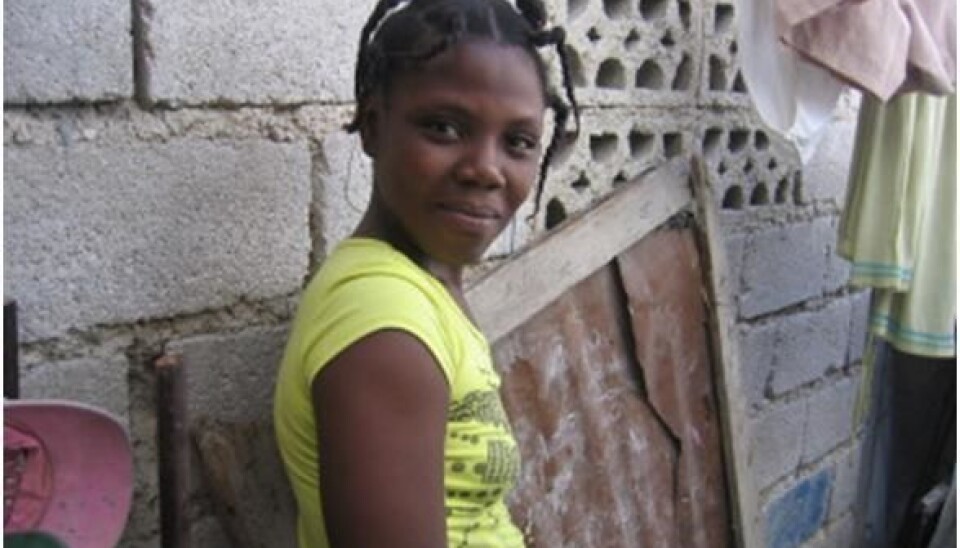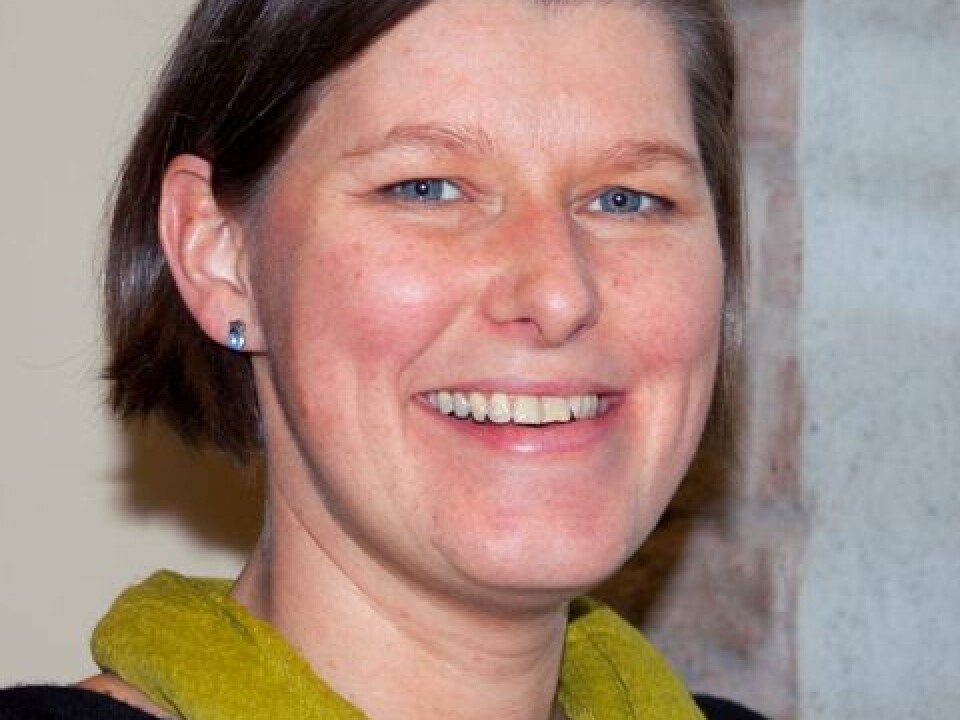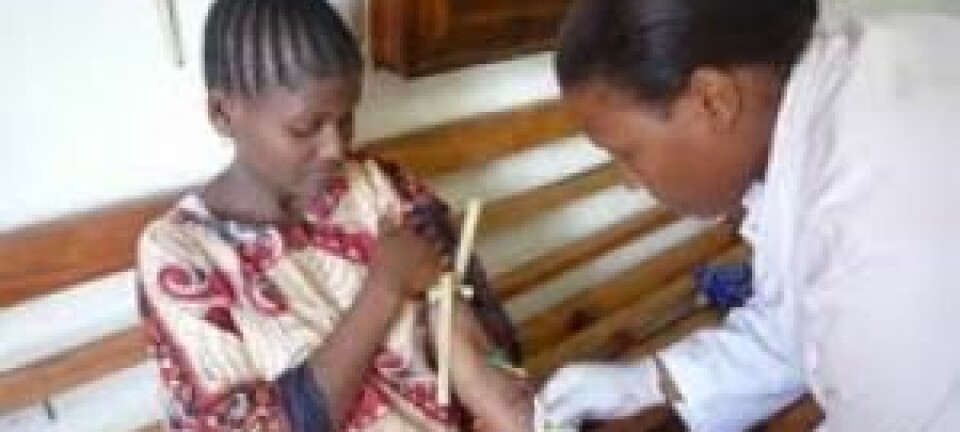An article from KILDEN Information and News About Gender Research in Norway

Gender when crisis strikes
People have different needs in a crisis situation. But how do the humanitarian aid workers tackle differences between men and women in times of crisis?
Denne artikkelen er over ti år gammel og kan inneholde utdatert informasjon.
Have humanitarian aid workers understood that a gender perspective entails more than men's violence against women? That it also has to do with men's vulnerability in a crisis and with incorporating women's and men's knowledge and experience into crisis management?
These are some of the questions asked by Associate Professor Kristin Sørung Scharffscher of the University of Tromsø.
Scharffscher was commissioned by the Norwegian Agency for Development Cooperation (Norad) to study whether the humanitarian work carried out by four UN organisations that receive financial support from Norway gives due consideration to gender issues.
She was asked to look in particular at the use of a handbook that was developed to give the organisations a common platform for incorporating a gender perspective into their activities. She recently presented her findings at a seminar at the Peace Research Institute Oslo (PRIO).
Two disaster areas

Rather than collecting data at the organizations' headquarters in New York, Geneva and Rome, Scharffscher decided to visit actual disaster areas to avoid getting sugar-coated information. She chose Dadaab in northern Kenya and earthquake-stricken Haiti, two areas with different types of crises.
Disasters are divided into different types, depending on how unexpected and how long-lasting they are. Dadaab has been the site of refugee camps since 1991, and Scharffscher expected to find what is known as a "creeping" crisis there. The earthquake in Haiti, however, was a sudden crisis with long-term ramifications.
"The three refugee camps located in Dadaab were built to provide shelter for 90,000 people. While I was there, the number of residents had reached 289,000. Despite all of the problems this entails, the camps were well-established, and many routines worked well."
Scharffscher arrived in Port-au-Prince eight months after the earthquake, right before the cholera outbreak. Everything was in ruins, and the situation was still rather chaotic. Not much was working, and people were totally overwhelmed by everything that had to be done.
"It was a terribly difficult situation, and I think it was the worst place I had ever been in terms of the challenges for the humanitarian aid workers," says the researcher.
Great self-confidence
"So what did I find? Different things in each organization, but even though the handbook itself had been used very little, a gender perspective had been relatively well implemented in the various organizations," says Scharffscher.
The Office of the United Nations High Commissioner for Refugees (UNHCR) is a major actor with extensive presence in the field. They have developed their own handbook with principles and standards for gender issues. Scharffscher found that they were well versed in their own material, and many had also taken an online course based on the handbook.
"They were relatively confident of their own knowledge of gender issues, which to a certain extent was well-founded. However, in some contexts, usually in relation to partner organisations, they were perhaps a little too confident," says the researcher.
What about the men?
The humanitarian aid workers in the World Food Programme (WPF) also showed great awareness of these issues.
"They had good guidelines, and they felt that these were good enough. I found that they were good at practical problem-solving. For instance, the WPF has a system that allocates extra sugar rations to girls who attend school regularly, since they are often expected to help in the home instead. At the same time, the WFP employees who worked in the camps discussed what signal this system sent to the boys," says Scharffscher. She continues:
"I found that employees who work in the field paid quite a bit of attention to gender. But in the WFP's case, it did not seem that the field workers' attention and expertise were fed back into the system through the formal reporting system. The gender perspective was reported mainly through numerical data."
Mother and child
UNICEF was attentive towards mothers, girls and boys.
"Surprisingly, though, men were left out of their written material. Many of the humanitarian aid workers claimed that their activities were naturally gendered, which is something I would question," says Scharffscher.
After an evaluation in 2008, UNICEF said that they had to put more focus on gender issues. A restructuring is underway, and Scharffscher found major differences in the employees' awareness of gender.
"Some were very reflective, while others could use a little more training. I also got the impression that it was difficult for many UNICEF employees to admit to their weaknesses, including how they follow up their partner organizations with regard to the gender perspective. The fact that I have very little data on this is in itself a finding," says the researcher.
Continuing discussion
The UN Office for the Coordination of Humanitarian Affairs (UN-OCHA) is the organization responsible for the handbook that was the basis of Scharffscher's study. As a result, the handbook is relatively well-known within the organization, and is important because it is directly related to their mandate.
"I got the impression, though, that some of the employees at the management level are sceptical towards the principles behind the handbook. They view gender as a political issue and think the topic is still up for debate," says Scharffscher.
Agents for the gender perspective
She was also in contact with people from the GenCap Initiative. On commission from the organizations' coordinating committee, the Inter-Agency Standing Committee, the GenCap advisors are sent on humanitarian operations to ensure that the participating organizations bear in mind the different needs of the women, men, girls and boys who are affected by a crisis.
"I found that the GenCap advisors are excellent agents for building a bridge between what the organizations are there to do and awareness of gender issues. But they sometimes seem a little lonely out there, and they often face some scepticism from the management. This is problematic, since they depend on support from the leadership to get things off the ground," says Scharffscher.
Is the handbook used?
"All in all, I found that principles and standards are mostly in place. But the employees followed the guidelines that are internal to their own organization, not the more overarching guidelines in the handbook. No wonder, since it is their own guidelines they are asked to report on."
"Several employees say they think the handbook is too extensive, that it contains too much theory and that it is impractical for a busy aid worker on assignment in the field," says Scharffscher.
She also found that there can be a huge discrepancy between what is expected at the headquarters and what happens in the field. The communication between these organisational levels was not always good either.
Translated by: Connie Stultz































